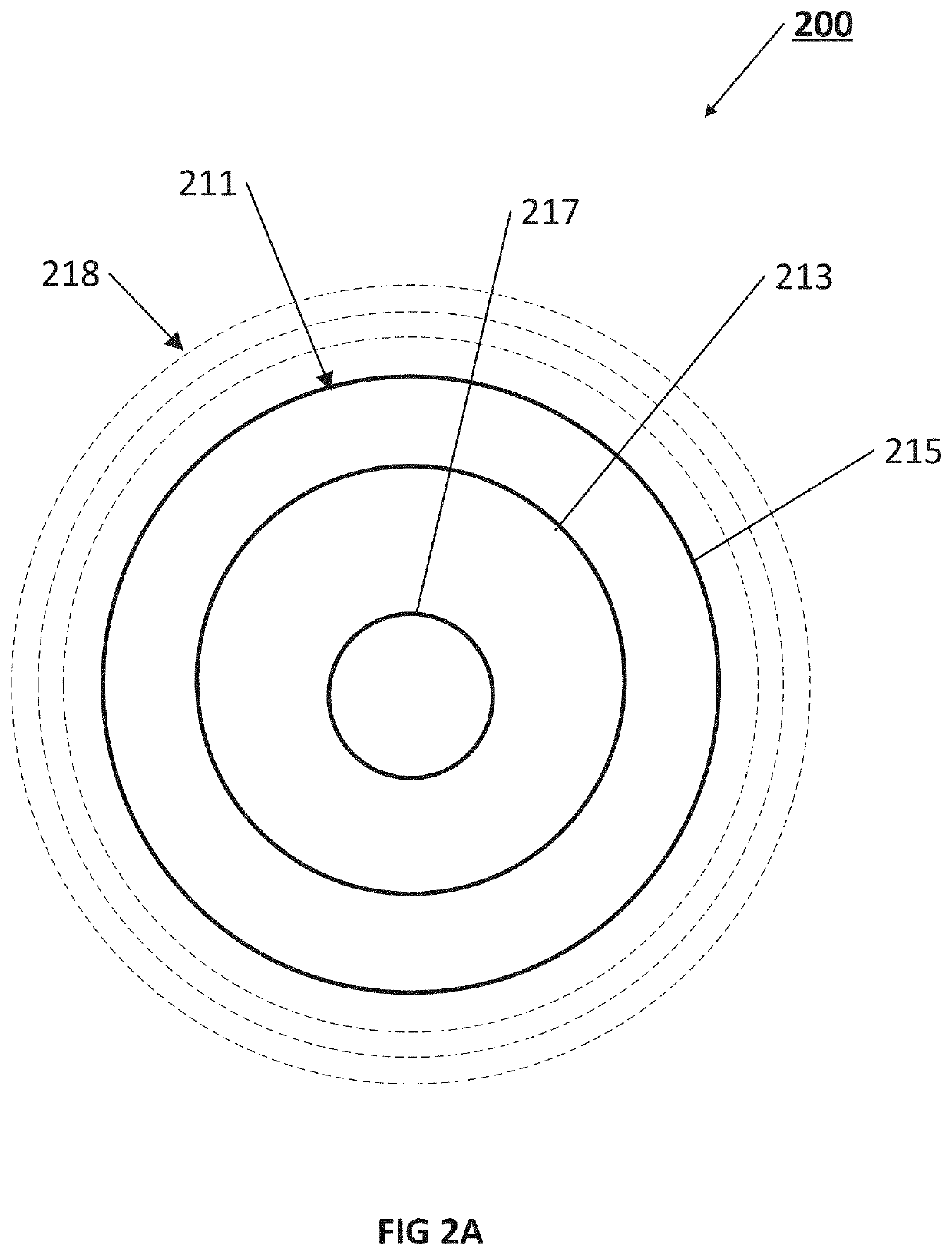Working wire for a biological sensor
a working wire and sensor technology, applied in the field of working wires for biological sensors, can solve the problems of increasing the chance of permanent damage to the health and body of the patient, reducing and affecting the quality of life of the patien
- Summary
- Abstract
- Description
- Claims
- Application Information
AI Technical Summary
Benefits of technology
Problems solved by technology
Method used
Image
Examples
Embodiment Construction
[0015]Biological sensors, such as electrochemical glucose sensors, are used for continuous glucose monitoring devices and systems. The sensor detects a concentration of an analyte in the patient, oftentimes by measuring the concentration or ion flow within the blood or other body fluids. It will be understood that a sensor may include multiple working wires, multiple reference electrodes, and counter electrodes which are constructed and arranged for the sensing. Generally, the working electrode which includes the working wire, is constructed to meet three basic requirements. First, it must be strong enough to withstand insertion under the patient's skin and then withstand the vibrations, shocks, and motions during use. Second, it needs to be flexible but straight and strong enough to follow a desired path into the skin, and to allow for some movement after insertion for patient comfort. Third, it needs to provide the electrical characteristics to support consistent and accurate sens...
PUM
| Property | Measurement | Unit |
|---|---|---|
| thickness | aaaaa | aaaaa |
| thickness | aaaaa | aaaaa |
| thickness | aaaaa | aaaaa |
Abstract
Description
Claims
Application Information
 Login to View More
Login to View More - R&D
- Intellectual Property
- Life Sciences
- Materials
- Tech Scout
- Unparalleled Data Quality
- Higher Quality Content
- 60% Fewer Hallucinations
Browse by: Latest US Patents, China's latest patents, Technical Efficacy Thesaurus, Application Domain, Technology Topic, Popular Technical Reports.
© 2025 PatSnap. All rights reserved.Legal|Privacy policy|Modern Slavery Act Transparency Statement|Sitemap|About US| Contact US: help@patsnap.com



